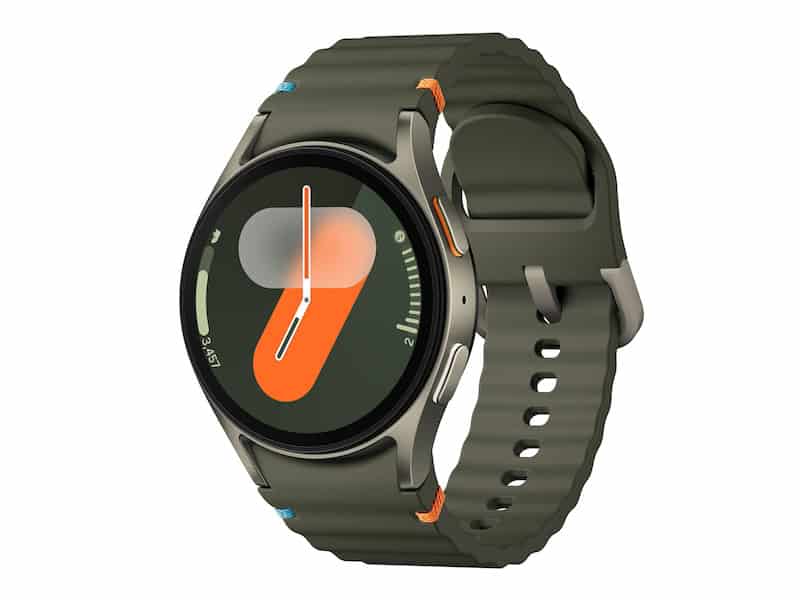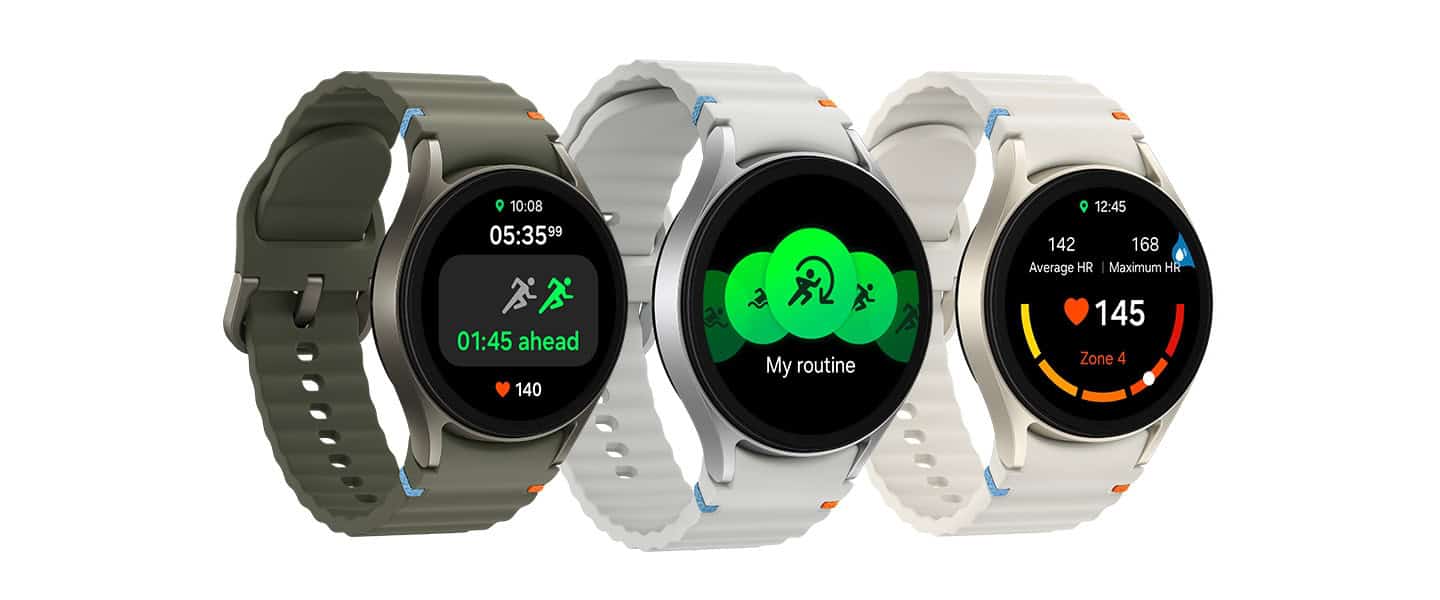The smartwatch world is buzzing as Samsung prepares for another major summer reveal. Set to be announced at the Summer Galaxy Unpacked event in July 2025, the Galaxy Watch 8 series is shaping up to be a major leap forward — not just for Samsung’s wearables, but for the entire industry. Alongside the Galaxy Z Fold 7 and Galaxy Z Flip 7, the Watch 8 lineup is expected to headline Samsung’s next wave of innovation.
While official confirmations are still under wraps, credible leaks, supply chain reports, and industry insiders are painting a very compelling picture of what’s to come.
A Familiar Timeline With Potential Surprises
Samsung has firmly established a tradition of unveiling new wearables during its summer Unpacked events, and this year looks no different. Historically, every Galaxy Watch since the original in 2018 has dropped mid-year — aligning with Samsung’s broader ecosystem launches.

However, 2025 could shake things up slightly. The standard Galaxy Watch 8 is virtually guaranteed, but the Galaxy Watch 8 Classic — with its iconic rotating bezel — looks poised for a comeback. Rumors of a Galaxy Watch 8 Ultra had circulated earlier, but recent chatter suggests Samsung might reserve “Ultra” ambitions for a future release or a different product segment entirely.
This focus on two main models hints at a refined strategy: doubling down on what users love rather than complicating the lineup.
The Return of the Rotating Bezel: A Beloved Classic
If there’s one rumor that’s electrifying Samsung fans, it’s this: the physical rotating bezel is likely returning on the Galaxy Watch 8 Classic.
First introduced with the original Galaxy Watch, the bezel was a fan-favorite feature for intuitive navigation. Its removal from the Galaxy Watch 5 Pro and Watch 7 lineups sparked considerable disappointment. Its comeback would not just be nostalgic — it would set the Watch 8 Classic apart from almost every other smartwatch currently on the market, where touchscreens dominate but often frustrate.
Samsung seems to be acknowledging that sometimes tactile controls simply work better — especially for quick access during workouts, wet conditions, or just everyday use.
Under the Hood: A Focus on Smooth, Efficient Performance
Performance upgrades are expected, though they might be more evolutionary than revolutionary. Samsung may stick with a refined version of the Exynos W1000 processor, based on a 3nm process that debuted with the Galaxy Watch 7. Expect improvements in:
- App loading speeds
- Battery management
- Overall responsiveness
Battery life has long been the Achilles’ heel of many smartwatches, and while early certifications suggest a small bump to 435mAh for the larger models (up from 425mAh), endurance likely won’t see a massive jump. Instead, software optimization via Wear OS 5 and One UI Watch 6 will play a huge role in stretching usage time to the promised 40 hours.
There’s also speculation Samsung could introduce a low-power display mode akin to Apple’s optimized always-on modes, further eking out extra battery life.
Software and AI Integration: Smarter Than Ever
The Galaxy Watch 8 will run Wear OS 5, built in close partnership with Google, layered with One UI Watch 6 for Samsung’s unique flavor of usability.
Expect improvements such as:
- Deeper AI integration: Samsung is rumored to leverage Google’s Gemini AI (formerly Bard) to supercharge the voice assistant experience, offering more proactive suggestions, context-aware actions, and on-device AI tasks that don’t require an internet connection.
- Better syncing with Galaxy phones: Expect easier cross-device task sharing, universal copy-paste, and even more seamless Samsung Health integration.
- New Google Play apps optimized for Wear OS 5: Apps like WhatsApp, Spotify, and Strava are likely to introduce richer smartwatch features by launch time.
Health and Wellness Tracking: Pushing Boundaries
Samsung has steadily turned its wearables into credible health companions, and the Galaxy Watch 8 looks to push even deeper:
| Feature | Expected Upgrade |
|---|---|
| Heart Rate Monitoring | Improved sensors for greater accuracy |
| Sleep Tracking | Expanded coaching features, new sleep consistency scores |
| Blood Glucose Monitoring | Still uncertain, but prototypes exist |
| Vascular Load Monitoring | New feature to assess cardiovascular strain |
| AI Health Coach | Real-time, personalized fitness and wellness advice |
The vascular load metric, if confirmed, could be a game-changer for early warning signs of cardiovascular issues — putting Samsung on the cutting edge of non-invasive health tech.
Also, a smarter AI-driven “personal health coach” could dynamically adjust fitness goals, suggest recovery strategies, and offer proactive health advice based on historical patterns — something users have been craving from wearables.
Design and Durability: Evolution Over Revolution
While early rumors hinted at a dramatic “squircle” design, newer leaks suggest Samsung will stick to its signature circular form, much to the relief of traditionalists.
Expect refinements like:
- Slimmer bezels for more screen space
- Lighter and more durable builds
- New premium material options (potentially even a titanium Classic variant)
- Fresh colorways to match the Galaxy Z Fold 7 and Flip 7 aesthetics
Water resistance ratings and MIL-STD-810G durability certifications should remain intact or even improve slightly, making the Watch 8 series even more suitable for outdoor adventurers.
Pricing and Availability
Early estimates suggest pricing will be largely unchanged from the Galaxy Watch 7 series:
| Model | Expected Starting Price |
|---|---|
| Galaxy Watch 8 (40mm) | $299 |
| Galaxy Watch 8 (44mm) | $329 |
| Galaxy Watch 8 Classic | $399+ (speculative) |
LTE-enabled versions will likely add a $50 premium. Pre-orders are expected to open immediately following the Unpacked event, with retail availability beginning by late July or early August 2025.
Why the Galaxy Watch 8 Could Be a Big Deal
In a smartwatch market increasingly dominated by iterative updates, Samsung seems to be positioning the Galaxy Watch 8 as a return to form — blending classic features like the rotating bezel with future-forward AI health monitoring.
If even half of the rumored features land, it could be Samsung’s most compelling wearable since the original Galaxy Watch.
And with Apple’s next-gen Apple Watch facing delays and rumors suggesting only modest upgrades this year, Samsung has a real shot at reclaiming serious mindshare — especially among Android users and multi-device Galaxy ecosystem fans.
A Look Back At Galaxy Watch 4 vs Watch 3
The Samsung Galaxy Watch 4 and Galaxy Watch 3 are two leading smartwatches with upgrades that focus on design, performance, software, and health tracking. They offer different features and build quality, aiming at improving the user experience.
- The Galaxy Watch 4 has a faster processor and superior graphics compared to the Galaxy Watch 3.
- The Watch 4 offers more RAM and storage, enhancing performance and user experience.
- Both models differ in price, reflecting the technological advancements in the Galaxy Watch 4.
When comparing the Samsung Galaxy Watch 4 to its predecessor, the Galaxy Watch 3, consumers are looking at two generations of smartwatch technology. The newer Galaxy Watch 4 boasts significant improvements in processing power and display technology. Equipped with Samsung’s 5nm Exynos W920 SoC, the Galaxy Watch 4 advances over the Watch 3’s Exynos 9110 with a 20% faster CPU and major improvements in GPU performance.
The design and functionality of the watches provide users with a choice between the cutting-edge and the classic. The Galaxy Watch 4 series, which includes the standard and the Classic model, offers a more refined look alongside hardware upgrades. These include a higher RAM and increased storage capacity, with the Galaxy Watch 4 offering 1.5GB of RAM and 16GB of internal storage compared to the Galaxy Watch 3’s 1GB RAM and 8GB of storage.
As for display and build, the Galaxy Watch 4 features a crisp and clear screen, with the 46mm Classic model presenting a 1.4-inch display and the smaller 42mm version boasting a 1.19-inch display. Both provide users with vibrant visuals and a responsive touch interface that enhances the user experience significantly. The pricing of the watches also reflects the added features and improved specifications, with the Galaxy Watch 4 series being generally more expensive than the Galaxy Watch 3 at its launch.
Design and Build Quality
The Galaxy Watch 4 features a sleek and modern design, available in a range of sizes to fit different wrists. The build quality is enhanced with a choice between a tough stainless steel case or a lighter aluminum finish. Both the Galaxy Watch 4 and the Galaxy Watch 3 meet the MIL-STD-810G standards for durability and offer water resistance up to 5ATM plus IP68.
Hardware and Performance
At the heart of the Galaxy Watch 4 is the Exynos W920 processor paired with robust hardware upgrades that result in a 20% improvement in CPU performance and significant gains in GPU performance over the Galaxy Watch 3’s Exynos 9110. This comes with more RAM for better multitasking and increased storage for apps and media.
Software and Ecosystem
Samsung, in collaboration with Google, launched the Galaxy Watch 4 with Wear OS 3, providing a seamless integration with popular Google services like Maps and Pay. It’s complemented by Samsung’s One UI Watch, enhancing the device’s usability and app availability compared to the Tizen-based Galaxy Watch 3.
Health and Fitness Tracking
The Galaxy Watch 4 introduces a new bioactive sensor for health and fitness, offering features like body composition, ECG, blood oxygen, and stress level measuring. These are significant upgrades over the Galaxy Watch 3, aiming at providing a comprehensive health monitoring experience similar to that offered by Apple Watch.
Compatibility and Connectivity
Both watches feature Bluetooth, GPS, Wi-Fi, NFC and optional LTE for connectivity, allowing them to operate independently from a smartphone if necessary. They are compatible with a wide range of Android phones, while Galaxy Watch 4 also extends compatibility to Samsung-made devices with added features.
Additional Features and Upgrades
The Galaxy Watch 4 brings a fresh look to the wearable’s interface and adds a more refined rotating bezel control. It presents a higher-resolution display, offering sharper visuals than the Galaxy Watch 3. The new model also comes with a range of band options and a lighter overall weight that enhances comfort.
Price and Value Proposition
Galaxy Watch 4’s pricing starts higher than the Galaxy Watch 3 did, reflecting the added functionalities and improved specs. While the price difference may be noticeable, the additional cost brings in significant advancements that may offer better value for users looking for the latest in smartwatch technology.







